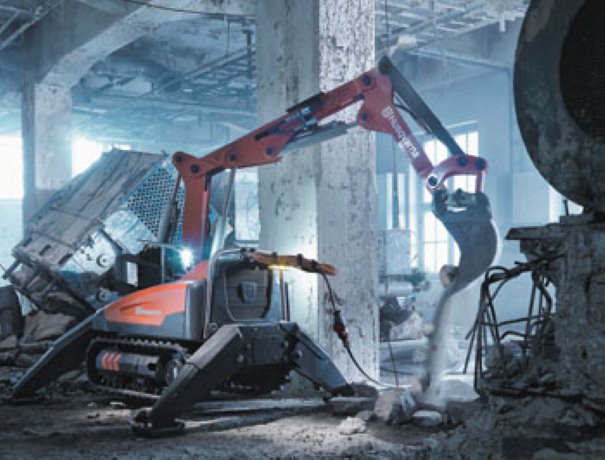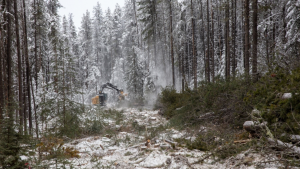Remote-controlled mechanical demolition is growing in the North American market, spurred by the twin concerns of worker safety and the environment.
Remote-controlled mechanical demolition is growing in the North American market, spurred by the twin concerns of worker safety and the environment.
Three firms — Brokk, Husqvarna and Stanley LaBounty — have introduced new mid-sized machines recently into a market that has lagged behind Europe for years.
All are electrically driven and all are capable of operating in tight indoor spaces.
Brokk and Husqvarna are Swedish; Stanley LaBounty is American, and entered the market through a partnership with Finnish manufacturer Finmac.
Worker safety has been the key driver in the development of the remote-controlled machines.
The operator can stand away from the danger of falling debris with a control panel connected by cable.
Mike Martin, director of North American sales for Brokk, said Swedish law requires contractors to limit employees’ time on jackhammers to prevent nerve damage and other injuries.
The remote-controlled machines helped contractors all over Europe address the issue, along with worksite hazards.
Johan Ekstrom, a Husqvarna product manager, agreed.
He said the use of remote-controlled demolition machines in the United States is 20 years behind Europe but is beginning to close.
Martin thinks Canada might be ahead of the U.S. because of the strong union base in the Ontario and Quebec construction industries.
In the U.S., he said, contractors have always had a ready supply of workers that would do demolition work.
But, regulations are changing, he said, and people are more receptive to protecting workers.
“Especially from back injuries from using jackhammers, or from what they call white knuckles, where workers start losing control of their nervous system because of the vibration,” he said.
Betty Blettner, a sales manager with Stanley LaBounty, added that the environmental concerns are an important driver of sales growth. Electrically-driven machines don’t emit harmful gases or particulate matter.
“With remote control, you can keep an operator out of danger,” she said.
“And with remote control, you can get into some areas far sooner than you could send a person in. If you’re cleaning out kilns, for example, the remote can get in days before a person could because it takes a long time for a kiln to cool down.”
She also pointed to the important role remote-controlled machines played in rescue operations in the aftermath of the recent earthquake and tsunami in Japan.
“Remote control will also have a role in cleaning up the nuclear reactors that have been badly damaged,” she said.
“There are parts of them where they still can’t put people in.”
Building owners have also begun to see value in what is being called selective demolition, which simply means leaving the building’s shell intact and gutting the interior and that has been a market driver for small, agile machines that work well in close quarters.
Brokk’s smallest machine, for example, can even climb stairs.
More models are showing up that use Bluetooth wireless technology to link man and machine.
The mid-range machines offered by all three firms are priced somewhere in the $135,000 to $150,000 range depending on the attachments selected.
Martin said using concrete crushers — instead of concrete breakers — eliminates vibration, allowing machines to work inside occupied buildings, like hospitals, museums or office buildings.
Despite the cost and relatively small sales, the sector is projecting strong growth over the next decade.











Recent Comments
comments for this post are closed